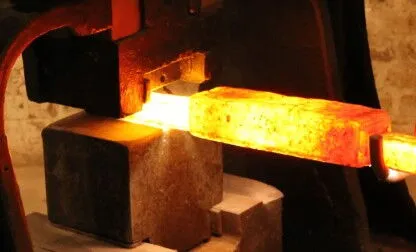When it comes to making metal parts, two of the most common methods used are forging and stamping. Both processes involve shaping metal, but they do it in different ways and are best suited for different types of products. Understanding the basics of each process can help you choose the right one for your needs. In this article, we'll break down how forging and stamping work, their advantages, and when to use them.
Forging is a process where metal is shaped by applying high pressure or force, often using hammers or presses. The metal is usually heated to make it easier to mold, and then it's squeezed into the desired shape. Forging can be done in two main ways: open-die and closed-die forging.
Open-Die Forging: This is more flexible and works well for making large, custom parts. It's typically used when parts need to be produced in low quantities or have complex shapes.
Closed-Die Forging: This uses molds to form the metal and is great for mass production. It produces parts with better precision and is faster than open-die forging.

Forging typically uses metals in forms like bars or billets. Common materials include carbon steels, alloy steels, and various metal alloys. The metal needs to be heated to the right temperature to be easily shaped and to avoid damaging it.
Forging involves a lot of force to deform the metal. This process changes the internal structure of the material, making it stronger. Forged parts often have a better microstructure and fewer internal defects, which means they're generally stronger and more durable than parts made with other methods.
Forging is commonly used for parts that need to be really strong and can withstand tough conditions. For example, it's used in things like airplane engine components, ship parts, and heavy-duty machinery. These parts are made to handle heavy loads and harsh environments.
Stamping is a process where metal sheets are shaped using a press machine and a mold. Unlike forging, stamping doesn't require heating the metal—it's done at room temperature. Stamping includes different operations like punching, bending, and deep drawing to create complex shapes quickly and efficiently.

Stamping uses thin metal sheets, which could be made of steel, aluminum, or other materials. The thickness of the sheet plays a big role in how the stamping is done and what kind of parts can be made.
Stamping involves pressing the metal sheet into a mold, which shapes it into the final part. Because this is done at room temperature and quickly, it's a great option for mass production. Stamping is also cost-effective, as it reduces waste and doesn't require extra machining.
Stamped parts are often used in products that require high precision and a smooth surface. You'll find stamped parts in items like car bodies, appliance covers, and electronics. Since stamping is fast and efficient, it's ideal for making lots of parts in a short amount of time.
Both forging and stamping are useful, but they each have their strengths. Let's break down how they compare in a few key areas.
Forging: Uses a lot of force and works well for parts that need strength and toughness. It's great for making parts with complex shapes, but it might require extra steps like machining to get everything just right.
Stamping: Works faster and is great for mass-producing parts with high precision. It's perfect for making parts with good surface finishes quickly and efficiently, but it's usually best for thinner materials.
Forging uses larger metal shapes (like bars) and involves heating, while stamping works with metal sheets at room temperature. The methods used in forging allow for more flexibility in terms of shape, while stamping focuses on speed and precision.
Forged parts tend to be stronger and more durable, making them suitable for critical applications like aircraft engines and heavy-duty equipment. Stamped parts, on the other hand, are more precise and lightweight, making them ideal for things like car bodies and household appliances.
Forging can be more expensive due to the cost of raw materials, heating, and possible additional steps. However, it produces very strong parts that can withstand tough conditions. Stamping is more economical for large runs, offering faster production with less waste.
Both forging and stamping are essential metalworking processes, each with its own advantages. If you need parts that are super strong and can handle heavy loads, like engine components or critical machinery, forging is the way to go. But if you need to produce a large number of parts quickly and with high precision, like car parts or appliance components, stamping is the better choice. Ultimately, the best process depends on what you're making, how much you need to produce, and the qualities your parts need to have. By understanding the strengths of each method, you can make an informed decision that fits your needs.